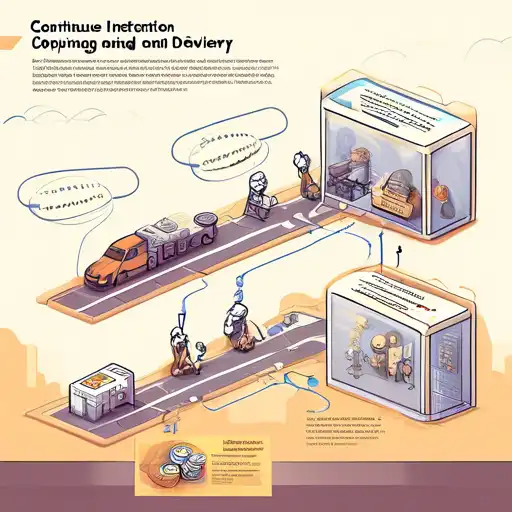What is Continuous Integration and Delivery?
Continuous Integration (CI) and Continuous Delivery (CD) are fundamental practices in the modern software development lifecycle, aimed at improving software quality and delivery speed. CI/CD automates the integration of code changes from multiple contributors into a single software project, ensuring that the software can be reliably released at any time.
The Benefits of CI/CD
Implementing CI/CD brings numerous benefits to development teams, including:
- Reduced integration problems
- Faster release cycles
- Higher quality software
- Improved developer productivity
How Continuous Integration Works
Continuous Integration involves developers frequently merging their code changes into a central repository, where automated builds and tests are run. This practice helps identify and fix bugs quickly, improve software quality, and reduce the time it takes to validate and release new software updates.
The Role of Continuous Delivery
Continuous Delivery extends Continuous Integration by ensuring that the software can be released to production at any time. It involves automating the entire software release process, from build to deployment, enabling teams to deliver updates to users more frequently and reliably.
Best Practices for Implementing CI/CD
To successfully implement CI/CD, teams should adhere to the following best practices:
- Maintain a single source repository
- Automate the build process
- Make the build self-testing
- Ensure every commit is built on an integration machine
- Keep the build fast
- Test in a clone of the production environment
- Make it easy to get the latest deliverables
- Enable everyone to see what's happening
Challenges in CI/CD Adoption
While CI/CD offers significant advantages, teams may face challenges such as resistance to change, lack of expertise, and the need for cultural shifts within the organization. Overcoming these challenges requires commitment, training, and the right tools.
Tools for CI/CD
Several tools can facilitate CI/CD practices, including Jenkins, Travis CI, CircleCI, and GitLab CI. These tools automate the steps in the software delivery process, from code integration to deployment.
Conclusion
Continuous Integration and Delivery are critical for teams aiming to improve their software development processes. By automating integration and delivery, teams can achieve faster release cycles, higher quality software, and improved customer satisfaction. Embracing CI/CD requires a cultural shift and the right set of tools, but the benefits far outweigh the challenges.
For more insights into DevOps practices, check out our articles on DevOps Culture and Automated Testing.
